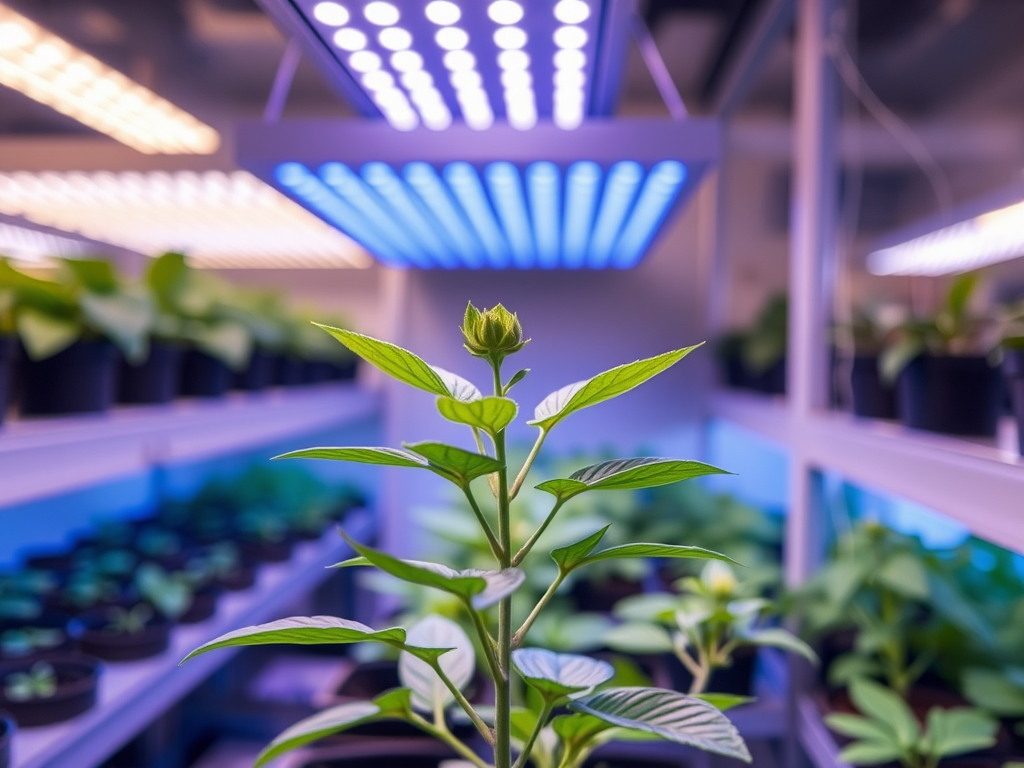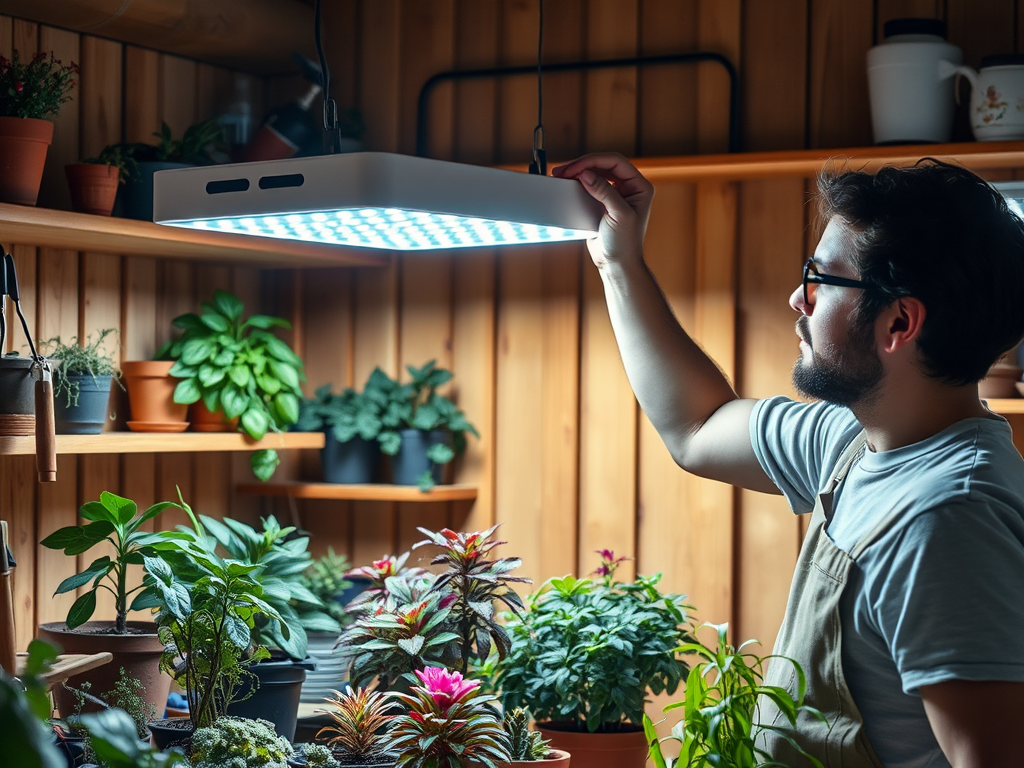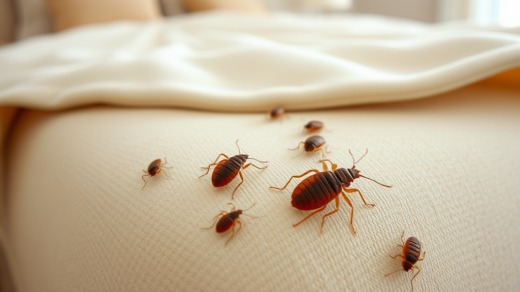Indoor gardening is no longer a niche hobby reserved for the green-thumbed elite. Today, with advancements in technology, anyone can cultivate thriving plants in the comfort of their home. Central to this indoor gardening renaissance is the lighting choice we make. Understanding how LED grow lights can profoundly impact plant growth is crucial for beginners. These lights not only mimic natural sunlight but also provide a range of benefits tailored specifically to plant needs. This guide will explore the transformative power of LED grow lights in enhancing indoor plant growth.
LED grow lights have emerged as a groundbreaking alternative to conventional grow lights. Unlike traditional incandescent or fluorescent bulbs, which generate heat and consume excessive energy, LEDs use light-emitting diodes to create illumination. This technology ensures that plants receive the optimal spectrum of light without overheating. Moreover, the versatility of LED grow lights means they can be engineered to provide specific wavelengths, catering to each growth stage of plants. As we dive deeper, we will uncover the myriad ways in which these lights can revolutionize your indoor gardening experience.
Understanding LED Grow Lights

To appreciate the benefits of LED grow lights, it is essential first to understand what they are. LED grow lights are specialized lights designed for plant growth, emitting specific wavelengths necessary for photosynthesis. Unlike traditional lighting solutions, LEDs outperform incandescent and fluorescent bulbs in numerous ways, particularly in terms of efficiency and lifespan. With various options available in the market, from full-spectrum to specific color emitters, beginners can find a light that meets their needs. The versatility and adaptability of LED grow lights make them an ideal choice for a variety of indoor gardening setups. Let’s delve deeper into the advantages that make these lights a favorite among indoor gardeners.
Benefits of Using LED Grow Lights

LED grow lights come packed with a multitude of benefits, setting them apart in the realm of indoor horticulture. One major advantage is their energy efficiency, which translates to substantial cost savings over time. In fact, studies show that switching to LED lights can reduce electricity costs by up to 50% compared to traditional bulbs. Furthermore, these grow lights have an impressive lifespan, often exceeding 20,000 hours, making them a long-term investment for serious indoor gardeners. Another critical benefit is their capacity for spectrum control, allowing users to adjust the light wavelengths to suit specific plant needs. By understanding these benefits, gardeners can make more informed decisions about their indoor lighting options.
Energy Efficiency
Energy efficiency is one of the most compelling reasons to switch to LED grow lights. These innovative lights consume significantly less power compared to their traditional counterparts. For instance, where a 300-watt incandescent bulb may illuminate your plants, a 100-watt LED can provide the same amount of light. This substantial decrease in energy consumption not only lowers your electricity bills but also decreases your carbon footprint. By investing in LED grow lights, you are contributing to a more sustainable future while enjoying the immediate financial benefits. This efficiency ensures that even novice gardeners can engage in indoor gardening without overwhelming costs.
Longevity
The longevity of LED grow lights is another major factor worth discussing. On average, LED grow lights can last over 50,000 hours, depending on usage and quality. This lifespan far surpasses traditional lighting systems, which may only last a few thousand hours. Consequently, this reduces the frequency of replacements and the associated costs, making LED lights a more economical choice in the long run. Their durability means less waste and a smaller environmental impact. As a result, gardeners can focus on growth and nurturing their plants rather than worrying about frequent light replacements.
Spectrum Control
Spectrum control plays a vital role in the effectiveness of LED grow lights. Different stages of plant growth require varying light wavelengths to thrive, and LEDs can be tailored to meet these needs. Below is a list of essential light spectrums and their significance:
- Blue Light (400-500nm): Promotes vegetative growth and helps plants grow strong and healthy.
- Red Light (600-700nm): Essential for flowering and fruiting stages, encouraging blooming and yield.
- Full Spectrum: Mimics natural sunlight, ensuring all stages of growth are effectively supported.
| Light Type | Wattage | Lifespan (Hours) | Energy Consumption |
|---|---|---|---|
| Incandescent | 300W | 1,000-2,000 | High |
| Fluorescent | 200W | 10,000 | Medium |
| LED | 100W | 50,000+ | Low |
How LED Grow Lights Aid in Optimal Plant Growth
LED grow lights cater to the specific needs of indoor plants, enhancing their growth potential in several critical ways. One notable effect is the enhancement of photosynthesis. Selecting the right wavelengths of light can significantly boost the photosynthetic process, enabling plants to convert light energy into chemical energy more efficiently. Furthermore, LEDs emit less heat, which is instrumental in maintaining a stable temperature in your indoor environment. This characteristic helps prevent heat stress in plants, allowing them to focus energy on growth rather than coping with extreme conditions.
Choosing the Right LED Grow Lights for Your Indoor Garden
Selecting the appropriate LED grow lights for your indoor garden is crucial for achieving optimal results. Beginners should consider several factors when making their choice. The first step is to understand plant types and their growth stages. Recognizing whether you are cultivating leafy greens or flowering plants will significantly impact your light selection.
- Leafy Greens: Require more blue spectrum light in the early stages.
- Flowering Plants: Benefit from increased red spectrum light during flowering stages.
- Succulents: Thrive under a balanced full spectrum light throughout their life cycle.
Additionally, determining the ideal light intensity and coverage is paramount. Gardeners can calculate the necessary light intensity based on the square footage of the growing area. A common recommendation is to provide 25-50 watts per square foot, depending on the type of plants being grown. With the right knowledge and understanding, beginners can make informed decisions, ensuring their indoor garden flourishes with the help of LED grow lights.
Tips for Using LED Grow Lights Effectively
To maximize the benefits of LED grow lights, several best practices can be adopted. Positioning the lights at an optimal distance from the plants is essential to prevent light burn while providing adequate illumination. Regularly adjusting light duration can simulate natural sunlight patterns, which is beneficial for plant growth. For best results, a recommended light cycle includes 18 hours of light followed by 6 hours of darkness for vegetative growth and 12 hours of light for flowering stages. Additionally, monitoring plant responses to light conditions can offer valuable insights into required adjustments.
Conclusion
In conclusion, LED grow lights represent a significant advancement in indoor gardening technology, providing numerous benefits to enhance plant growth. From energy efficiency and longevity to spectrum control, these lights cater specifically to various plant needs. Additionally, understanding how to select and use LED grow lights effectively can empower beginners to achieve impressive results, transforming their indoor gardening experience. As we move forward, embracing these innovative lighting solutions will undoubtedly yield a flourishing indoor garden.
Frequently Asked Questions
- What is the difference between LED grow lights and traditional grow lights? LED grow lights are more energy-efficient, have a longer lifespan, and offer better spectrum control compared to traditional options.
- Can I use LED grow lights for all types of plants? Yes, LED grow lights can be adjusted for various plants, including flowering and leafy greens.
- How far should LED grow lights be from plants? The distance varies by the wattage of the light and the type of plant, but generally, 12-24 inches is recommended for most scenarios.
- Do I need to replace LED grow lights frequently? No, one of the advantages of LED grow lights is their long lifespan, typically lasting up to 50,000 hours.
- Are LED grow lights safe for indoor use? Yes, LED grow lights produce less heat and are considered safe for indoor environments when used properly.


